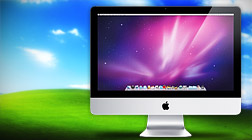Switching from a Windows PC to a Mac is a big step. At first, Mac OS X can seem like a foreign land to folks who have only used Windows in the past. But with an open mind and a little re-training, it’s not so daunting after all. It’s actually pretty exciting!
Apple’s Mac computers are well known for their ease of use, but that doesn’t mean everyone is able to jump in as effortlessly as others. The biggest problem former Windows users face is understanding that the way they’ve been trained to use a computer by Microsoft doesn’t mean that’s the way all computers should work. It’s merely the way Microsoft chose to make Windows work, which is different than the way Apple chose to make Mac OS X work.
Loyalists can get into debates all day long over which company’s methods are better, but the unbiased fact is they are simply different. As a result, anyone who makes the switch from Windows to Mac needs to let a number of basic concepts and habits go. Once a switcher does this, they’ll be more open to learning how Mac OS X works and the unique benefits it offers, rather than complaining it’s not what they’re used to.
1. Menu bars for every window
Windows users are used to seeing a menu bar (File, Edit, Help, etc.) reside inside every application window they have open. For example, Internet Explorer has its own menu bar, as does Outlook, Notepad, and so on. Mac OS X takes a different approach as it only has one menu bar at the very top of the screen that stays there at all times and changes menu options based on the currently active application.
2. Red X closes the program
In Windows, clicking the red X in the top-right corner of a window totally stops or “quits” the program. Mac OS X has a red X too, but it has a different function. It merely closes that window – leaving the program itself still running in the background. For example, if you have 5 Microsoft Word documents open, they all have separate windows. Clicking the red X on one of them closes that document’s window only, and the other 4 are unaffected. You can tell an application is still running by the glowing blue dot under its icon in the Dock. To totally stop a Mac application, go to the program’s name in the menu bar and select Quit. Right-clicking on the program’s icon in the Dock and selecting Quit works too. Or, better yet, just press Command+Q on the keyboard.
3. Double-click title bar to maximize
The very top of a window in both Windows and Mac OS X is commonly referred to as the title bar. Double-clicking this area in Windows maximizes the window to the full size of the screen. Doing the same thing on a Mac minimizes the window by sending it to the Dock and hiding it from view. You can disable this behavior on a Mac by going to System Preferences > Appearances and unchecking the “Double-click a window’s title bar to minimize” option. You can’t configure it to work like Windows, though.
4. Maximize button
In Mac OS X there is no maximize button like in Windows. Instead, there is a green “Zoom” button next to the red close & yellow minimize buttons in the corner of every window. The Zoom button resizes the window to fit whatever content it’s displaying, not to fill the screen. Not maximizing every window to full screen is probably the biggest change in thinking a switcher faces at first.
5. Enter key to open files
When a file is selected in Windows, pressing the Enter key opens it in the default application. If you want to open a file when it’s selected in Apple’s Finder, you need to double-click it or press Command+O. That’s because the Enter key renames the selected file on a Mac.
6. Cut and paste files
Windows users are probably familiar with the concept of “cutting” files from one location and then “pasting” them somewhere else. This essentially moves a file from its original location to a new one, as opposed to making a new copy of a file while the original stays put. Mac OS X does have the copy command, but it does not let users cut files in Finder. The best way to move a file in Mac OS X is to drag and drop it. This can be accomplished with two Finder windows (the original location and the desired location) open side-by-side or by using Finder’s spring-loaded folders.
7. Fill up the desktop with icons
It’s common for Windows users to fill up their desktop with application shortcuts, files, folders, etc. After all, the desktop is the first thing people see when the computer boots up and it provides easy access to frequently used items. It’s not a good idea for switchers to carry that habit over to their new Macs, though. Application icons and files are available from the Dock, so the Mac desktop is meant to be mostly – if not completely – empty. In fact, too many icons on the desktop can slow down the entire system considerably.
Are you a Mac user who previously came from the Windows world? What other concepts and habits have you had to throw out the window (no pun intended) to fully enjoy Mac OS X?










December 31st, 2010, 7:22 PM
The Eck,
OS X’s red traffic light also displays an X when the mouse cursor hovers over it.